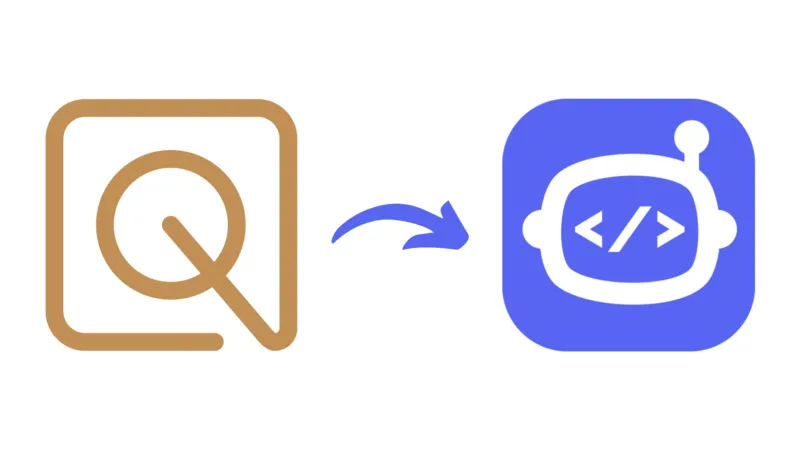Boot.dev Blog - Pg. 6
-


The Top 11 Computer Science Books for Self Study [2024]
Aug 24, 2022 by Natalie SchoonerIn today’s modern, fast-paced world, we look to StackOverflow, Reddit, and hands-on courses to learn about computer science and software engineering.
-


A Complete Overview of Computer Science for Beginners
Aug 21, 2022 by Winston WagnerGetting into computer science can be a daunting task. There are so many career paths down which a computer education can take you, so many programming languages to master, and so many skills to learn.
-


What is the Future of Computer Science?
Aug 16, 2022 by Natalie SchoonerIn a word, the future of computer science is promising. In a few more words, the future of computer science is promising, but with challenges to overcome.
-


How to Use the Best Software Engineering Job Boards
Aug 05, 2022 by Lane WagnerWith so many job boards out there, it can be terribly confusing to know where to start when you’re looking for a programming job - especially if you’re looking for your first programming job.
-


What Are the Career Options in Computer Science?
Aug 01, 2022 by Winston WagnerThe future is bright for career options in computer science with remote work opening up doors that weren’t present before.
-


Using GitHub Issues to Hack Together A Feedback System
Jul 31, 2022 by Lane WagnerBoot.dev has been my side-project for the last couple of years now. Being a learning path for backend developers focused on quality over quantity, I knew early on that it needed to have a really tight feedback loop from students.
-


Learn Backend Development: Complete Path for Beginners [2024]
Jul 24, 2022 by Lane WagnerSo you’ve decided you want to learn backend development so you can get a job – congratulations!
-


6 Pros and Cons of Online Coding Bootcamps
Jul 18, 2022 by Natalie SchoonerIf you want to learn to code, there are many strategies to get your coding skills from non-existent to employable.
-


How to Do a Coding Bootcamp Part-Time
Jul 12, 2022 by Natalie SchoonerStep 1: Develop a caffeine addiction. 🔗 If you want to add coding to your list of skills, either out of curiosity or to take your career in a whole new direction, you’ve probably considered a coding bootcamp.
-


The 12 Most Engaging Resources for Learning Python
Jun 24, 2022 by Natalie SchoonerWhile it’s straightforward to get Hello World implemented in Python, learning the ins and outs of the programming language takes a lot of time and effort.
-


Why We Force You to Learn Multiple Programming Languages
Jun 13, 2022 by Lane WagnerI’ve been building Boot.dev as a side-project for the last couple of years, and have recently had many new students ask the same question:
-


What Would a Recession Mean For Developers?
May 26, 2022 by Lane WagnerWith markets in a slump, many of us are concerned a recession could be right around the corner.
-


How much do coding bootcamps cost?
May 24, 2022 by Zulie RaneAnd an answer to what you’re really asking: “are coding bootcamps worth it?” 🔗 I’ll give you the quick answer right off the bat: coding bootcamps cost 13,500 on average based on the data collected by BestColleges.
-


The Top 8 Online Coding Bootcamps for 2022
May 21, 2022 by Zulie RaneI looked at the cost, duration, structure, and USP for each online coding bootcamp 🔗 If you’ve been living under a rock for the last decade, let me quickly tell you about what a coding bootcamp is before I get into the top online coding bootcamps.
-


How Not to Ask for Help Online
May 20, 2022 by Lane WagnerI’ve spent an unhealthy amount of time online over the course of my life, and in the last couple years I’ve been managing a Discord server for people who are learning computer science.
-


6 Undeniable Reasons to Learn Computer Science
May 10, 2022 by Zulie RaneIs it a bit dramatic, perhaps, to say that the fate of the world rests on computer science and that’s why you should learn computer science?
-


The Problem with Education is a Problem of Incentives
May 10, 2022 by Lane WagnerI’ve found that almost anyone I talk to agrees with the statement: There is something wrong with education, particularly higher education.
-


We Just Launched Community Insights
Apr 27, 2022 by Lane Wagnertl;dr 🔗 At Boot.dev we’ve launched “community insights”! Insights make it possible for our students to drop comments at the bottom of any step in our coding courses.
-


Top 10 Communities For Learning to Code
Apr 20, 2022 by Zulie RaneWhy you need a coding community 🔗 The one thing that every programmer has in common, whether they’ve only ever implemented a “Hello World” program or they’re considered a “senior” software engineer, is the need to continuously learn.
-


Qvault is moving to Boot.dev
Apr 07, 2022 by Lane WagnerWe’ll keep this announcement short – we’ve moved Qvault.io to Boot.dev! As you know, we’ve been hard at work bootstrapping on online computer science bootcamp.
-


How to Build the Best GitHub Profile for Your Job Search
Mar 04, 2022 by Lane WagnerI’ve reviewed a lot of resumes, both as an engineering manager and in the monthly resume workshops we do in the Boot.
-


8 Best Ways to Learn JavaScript, Personalized
Feb 05, 2022 by Meghan ReichenbachJavaScript is undoubtedly one of the best languages to learn as a developer, whether you’ve been at it for years or are just starting out.
-


How Long Does It Take To Learn JavaScript? (& How To Learn Fast)
Feb 05, 2022 by Zulie RaneA good programming language is one that newcomers can learn fast. This is one of the reasons why JavaScript is so popular – it’s possible to learn Javascript quickly and with minimum fuss.
-


Julia vs Python: Which is Best to Learn First?
Feb 05, 2022 by Zulie RaneAnyone who’s anyone in the tech world has heard of Python. It’s one of the most popular programming languages in the world, and it’s been near the top of developer popularity rankings for years.
-


The 7 Best Ways to Learn Golang and Find Your Inner Gopher
Feb 05, 2022 by Natalie SchoonerGolang was released in 2012, making it a relatively new language when compared to competitors like Python, which was released nearly two decades prior, yet it’s managed to stay ahead of the game as not only a coveted language by employers, but also loved by programmers.